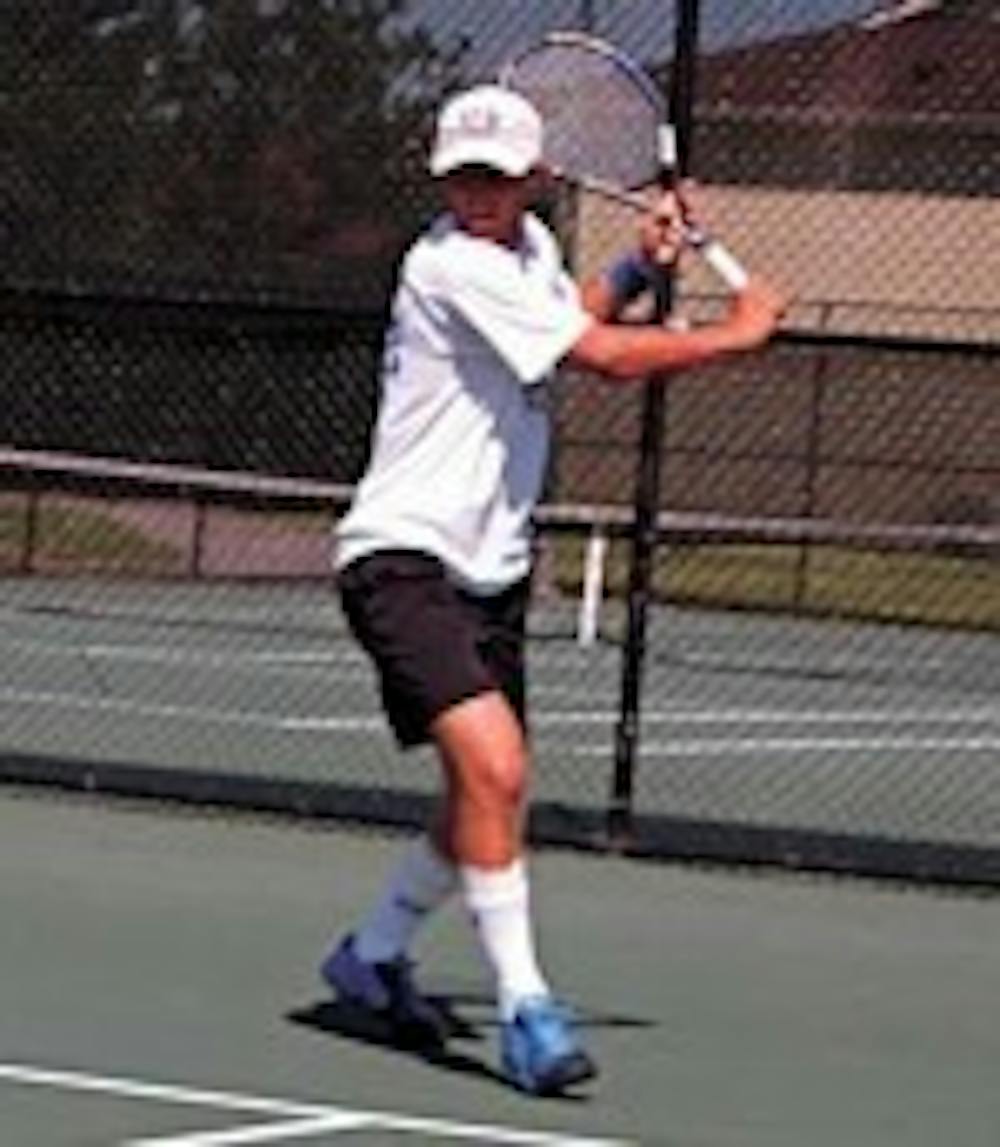This is part one of a two-part feature on international tennis players at UB. TodayOs portion looks at how it has affected American collegiate tennis.
A vast melting pot of cultures, the United States has historically been a haven for international athletes in professional sports.
Now a younger, hungry generation of foreign tennis players has braved the culture and language barriers of immigrating to the United States. Because of their extensive, sometimes professional experience, their arrival has been accepted by some within the NCAA community, but has drawn skepticism from others.
"Many of the young men and women who come over are students who have gone through extensive international playing competition, so when they come over here, they have a wealth of experience at their disposal," said Buffalo men's tennis coach Russ Crispell.
Players and coaches alike cite the academic allure for playing in the United States, where college scholarships are readily available, drawing interest from international athletes.
"Players are able to acquire four-year or even master's degrees while they're playing tennis in the United States," said Crispell. "A lot of foreign kids whom I've recruited consider the (United States) the premier place to live and play the sport."
Andreea Novaceanu, who hails from Bucharest, Romania, came to UB and joined the women's tennis team. She says that choosing to play in the United States was the right decision to make and that she doesn't regret it at all.
"I came here because I wanted to try something new," she said. "I had the opportunity to study home or study here, but if I played for a college in Romania, I would never have gotten a scholarship. Because I came (to UB), I'm able to pay for my tuition."
However, eyebrows have been raised by some American-born NCAA Division I coaches and players. Because of the professional playing experience of some of the international participants, some believe that the playing field may be uneven.
"I think it's definitely something that they have to do better at policing. What's interesting is that you can play at the professional level and still be an amateur," says UB men's tennis co-captain Nick Zieziula. "There are things that need to be looked at from an NCAA standpoint."
Sometimes, they play alongside professionals for years before deciding to play in the United States - declaring themselves eligible under NCAA rules, where the rules allow for freshmen as old as 22.
"Some of them are coming from junior programs where they were being bred to play professional tennis ... they might have just been on court all day every day," says Zieziula. "A lot of players who play at the college level are playing against people who compete professionally during the off-season."
In a USA Today article written in 2003, the UCLA Golden Bears' head coach Peter Wright says that in order to stay competitive, it is essential for college teams to look for foreign talent.
"There are not enough good American players to go around at the level college tennis is being played, and right now that level is pretty high," Wright said in the article. "It's at the low professional level already. That has contributed to foreign players on rosters."
However, many NCAA coaches continue to look within U.S. borders first before deciding to recruit foreign players elsewhere.
"I look in my own backyard first," says UB women's tennis head coach Kathy Twist. "Then, we go out of state, and if they're not interested, we keep broadening our base. What I have is lots of international contacts, and everyone loves the academic program we have at Buffalo."
But as long as more tennis is being played throughout the rest of the world, coaches for NCAA programs will continue to scour the globe for the best players available.
"New York state competition pales to competition around the rest of the world," says Crispell. "When they come to the States, these are kids who are seasoned athletes. They come in with their 'A' game already."
In addition to a relative difference in skill level, some say there's a general stylistic difference as well:
"Foreign players know how to construct a point, they're a little bit more consistent with slices and spins," says Twist. "Here in America, we play a power game."
However, American players are better conditioned than their foreign counterparts, with a greater emphasis on working out and conditioning, says Novaceanu.
"For example, Romanian and Italian players learn about movement and mechanics first when they're young. Here, the first thing players learn is where to put the ball on the court. Also, in America, you have a big emphasis on working out. At home, all my workouts would be on the court."





